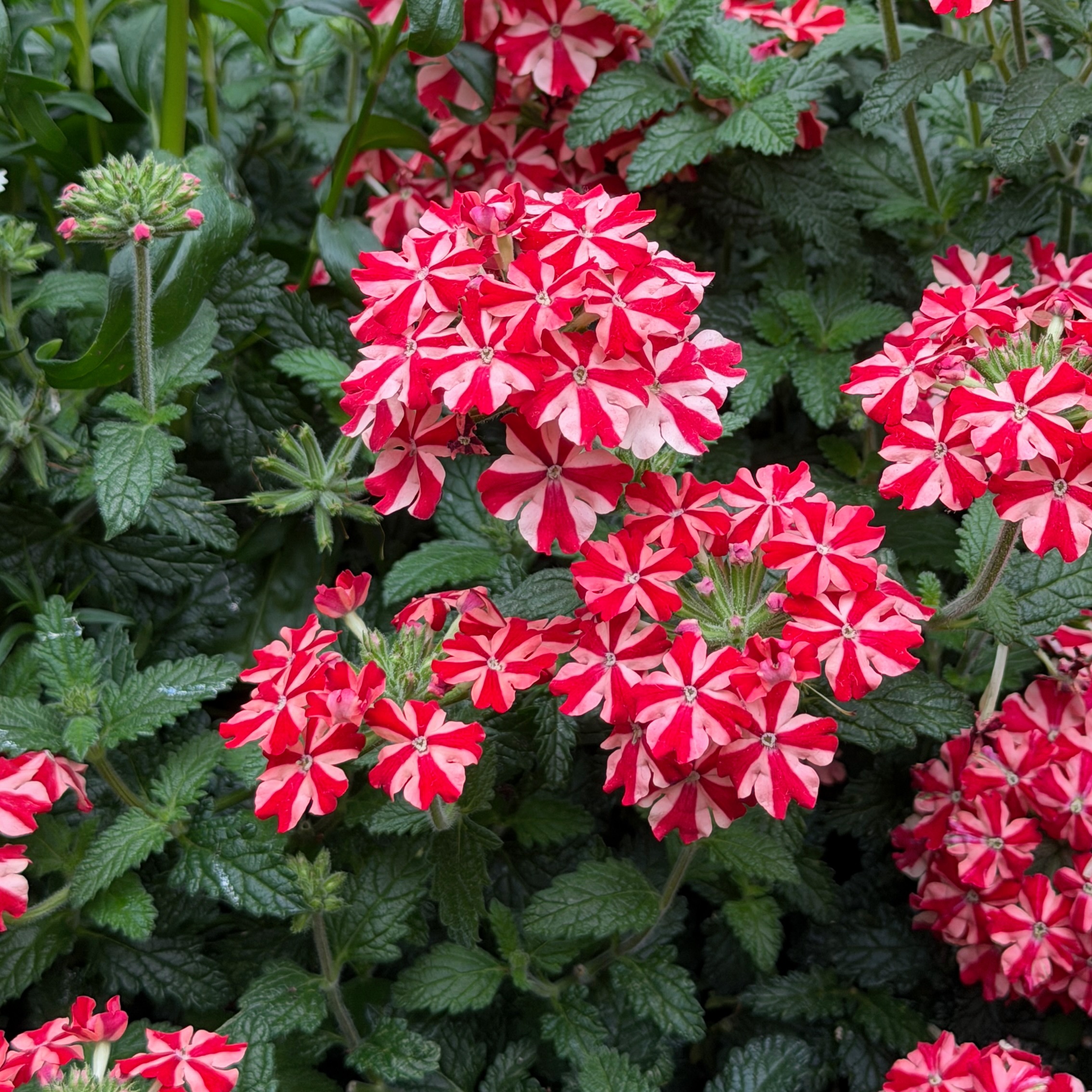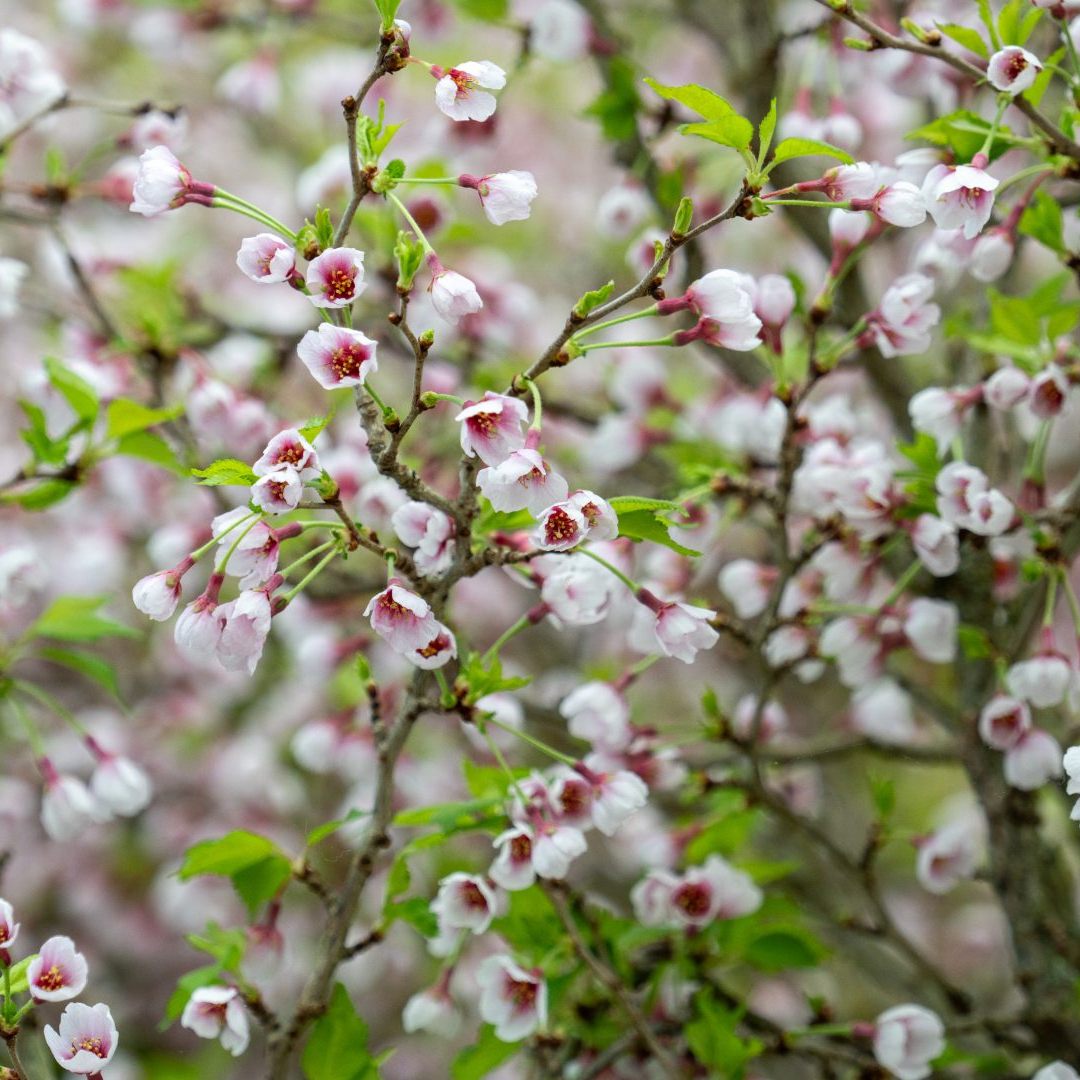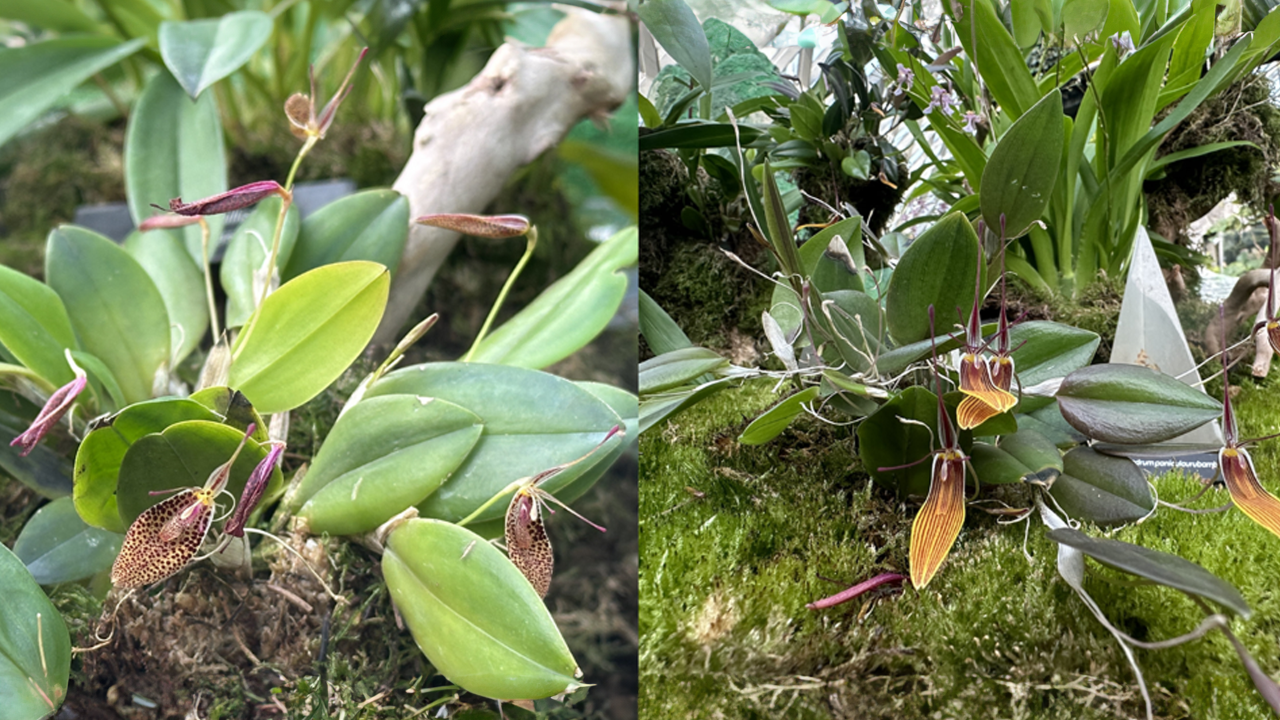 Restrepia elegans (left) and Restrepia trichoglossa (right) in bloom. The native distribution of both of the New World orchid species includes Peru, hence their feature in the current 'Orchids of Machu Picchu' display.
Restrepia elegans (left) and Restrepia trichoglossa (right) in bloom. The native distribution of both of the New World orchid species includes Peru, hence their feature in the current 'Orchids of Machu Picchu' display.
Of the thousands of prolific miniature orchid genera in the Pleurothallidinae subtribe, Restrepia are not only attractive but easy to care for and most rewarding for growers during its flowering period. This genus was named in honour of Don Jose E. Restrepo, an early Colombian orchid investigator, and the genus was first described in 1816 in Nova Genera et Species Plantarum. There are over 65 Restrepia species sporting flowers with considerable variability, but all species within the genus are similar in respect to their floral structure. As epiphytes, Restrepia are commonly found on tree branches near water, in habitats of middle to high elevation moist forests and are rarely found in the lowlands. They are distributed from southern Mexico to Venezuela, in western South America, with peak diversity in the Andes of Colombia and Ecuador. These areas of montane forest are heavily affected by deforestation, and habitat losses were observed for Restrepia which coincided with the route of the Pan-American Highway in these countries. The degree of threat faced by this genus was shown to be considerable.
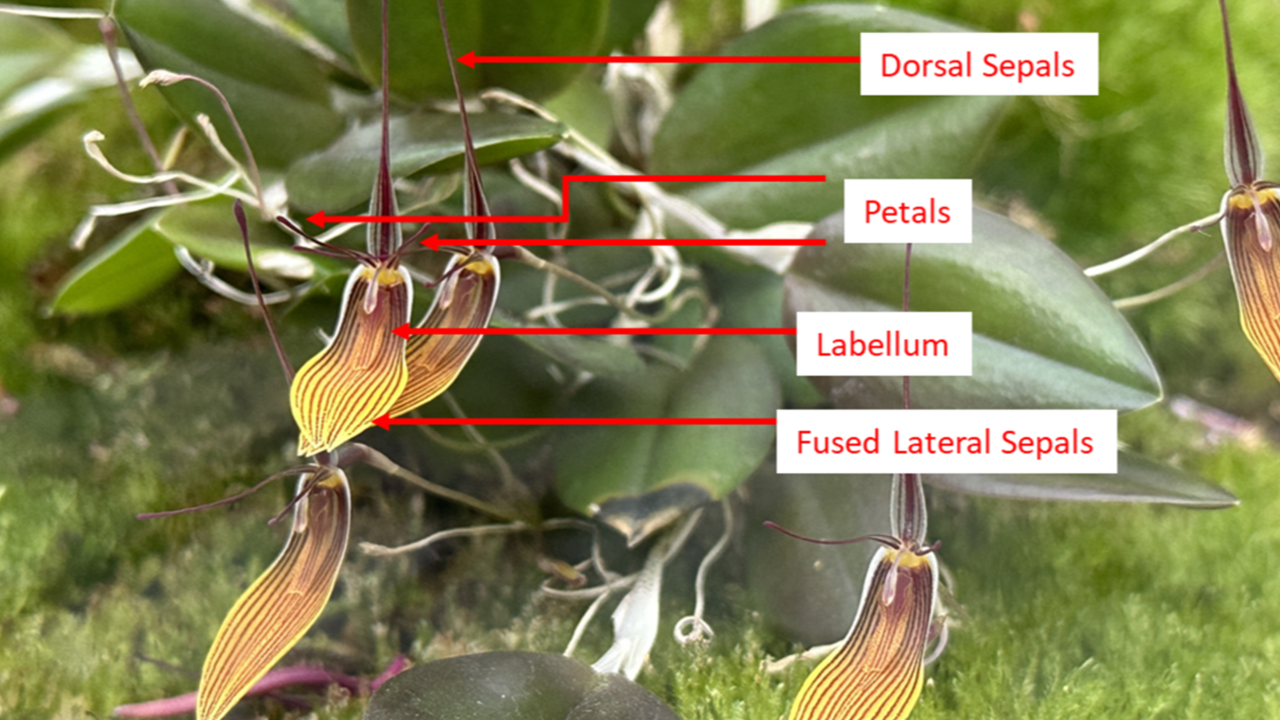 Floral parts of a Restrepia flower.
Floral parts of a Restrepia flower.
Inflorescences arise from the base of the underside of the leaves, often producing one or a few flowers. Once a leaf base begins to produce an inflorescence, it will continue to produce inflorescences from that same area for several years. Restrepia flowers are easily identified by their distinct form, which resembles a shoehorn with three antennae. The two lower sepals are fused into a spoon-like shoehorn upon which a smaller tongue-like lip (labellum) rest. The dorsal sepal and petals are the long, thread-like antennae, each membranous at the base and sometimes ending in fleshy knobs. Flowers vary in size from 6 to 50mm, ranging in colour from burgundy-red, green, yellow to orange, often decorated with red or purple stripes and spots. Many Restrepia flowers display iridescent qualities like their cool-growing cousin, the Masdevallia. Therefore, when a beam of sunlight shines on the flowers, an amazing, crystalline look can appear.
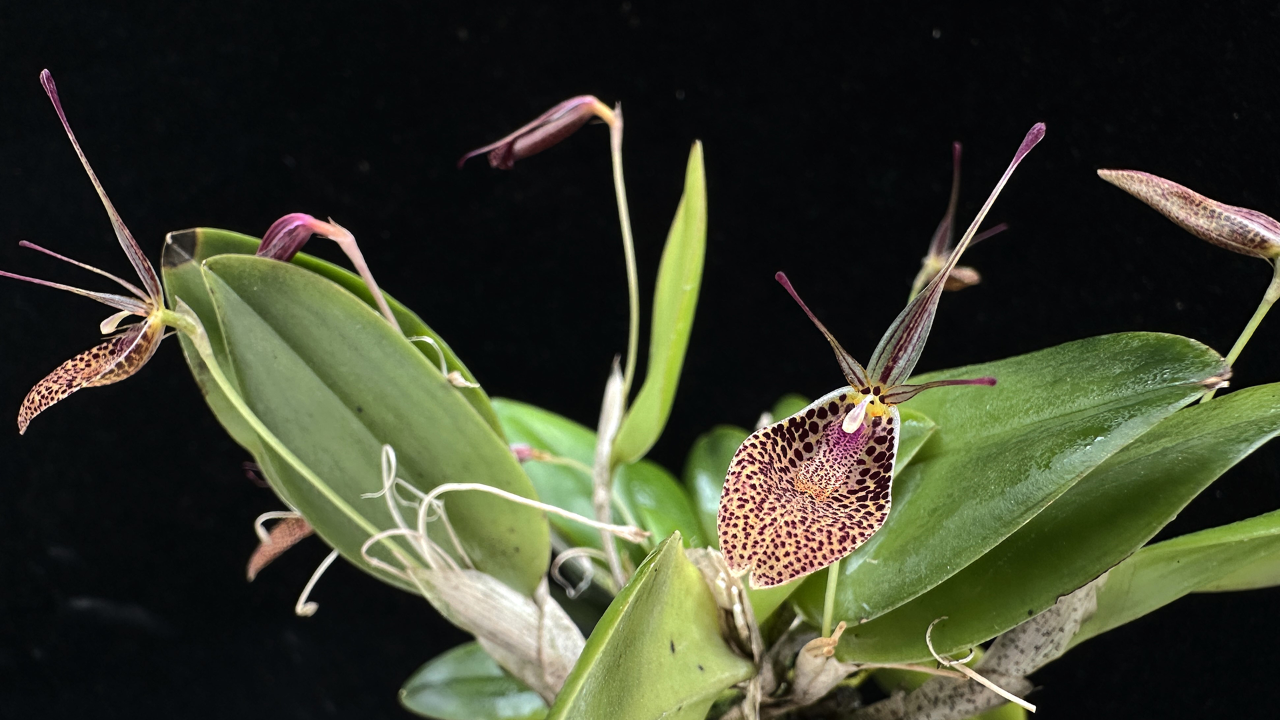 Restrepia elegans exhibiting yellow flowers diffusely spotted in burgundy red. This species is found from Venezuela, Colombia and Peru in wet montane forests at altitudes around 700 to 2800 meters.
Restrepia elegans exhibiting yellow flowers diffusely spotted in burgundy red. This species is found from Venezuela, Colombia and Peru in wet montane forests at altitudes around 700 to 2800 meters.
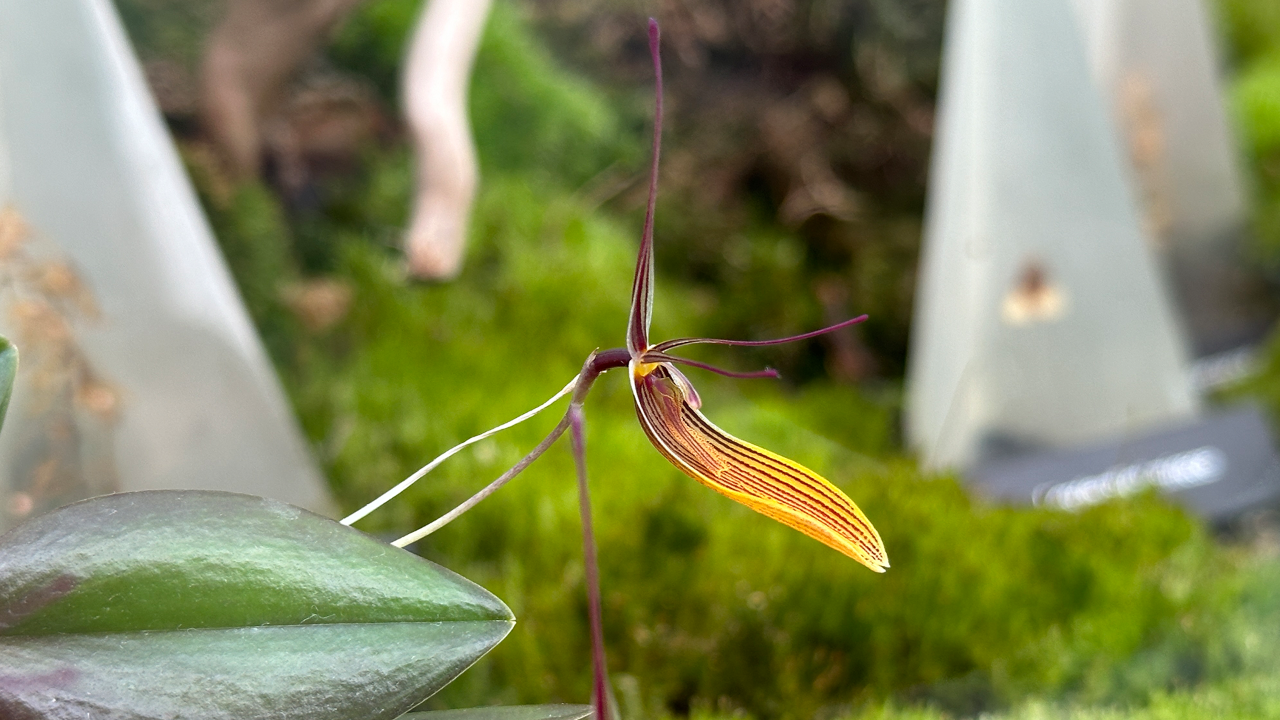 Restrepia trichoglossa are found in Mexico, Costa Rica, Panama, Colombia, Peru and Ecuador in wet cool cloud forests at elevations from 300 to 3200 meters. Their flowers are yellow, finely striped in burgundy red. The filamentous petals (antennae) flap when blown by the wind to attract its pollinators.
Restrepia trichoglossa are found in Mexico, Costa Rica, Panama, Colombia, Peru and Ecuador in wet cool cloud forests at elevations from 300 to 3200 meters. Their flowers are yellow, finely striped in burgundy red. The filamentous petals (antennae) flap when blown by the wind to attract its pollinators.
Though not much is known about the pollination biology of Restrepia, this genus shows many of the unusual anatomical or chemical adaptations that orchids have evolved to attract their pollinators; in the case of this genus, likely flies. The floral anatomy may be pseudocopulatory, resembling a female waiting for a male to mate with, or they might be attempting to attract something that preys upon such insects. Their thin, antennae-like dorsal sepal and petals move slightly in the breeze, a motion known to engage insects. Moreover, the clubbed tips of these structures have small glands called osmophores that release highly volatile foul-smelling compounds designed to entice flies which waft rapidly over great distances. Unfortunately for flies that follow the enticing scent, they discover only putrid-smelling flowers with no nectar reward but this doesn’t stop them from probing the flowers and carrying out pollination for some of them. Several South American species of Restrepia are blooming at the Gardens now and their flowers are short-lived, so keep a lookout for this miniature orchid genus on display in the orchidarium at the Orchids of Machu Picchu display, Cloud Forest!
Written by: Ziana Yacob, Senior Manager (Research and Horticulture)
Ziana's fascination with the many wonders of plants led her to study Horticulture. She has been involved in propagating and nurturing in-house plant collections, with a special focus on orchids. Keeping plants thriving is both a rewarding challenge and a continuous journey of learning for her!
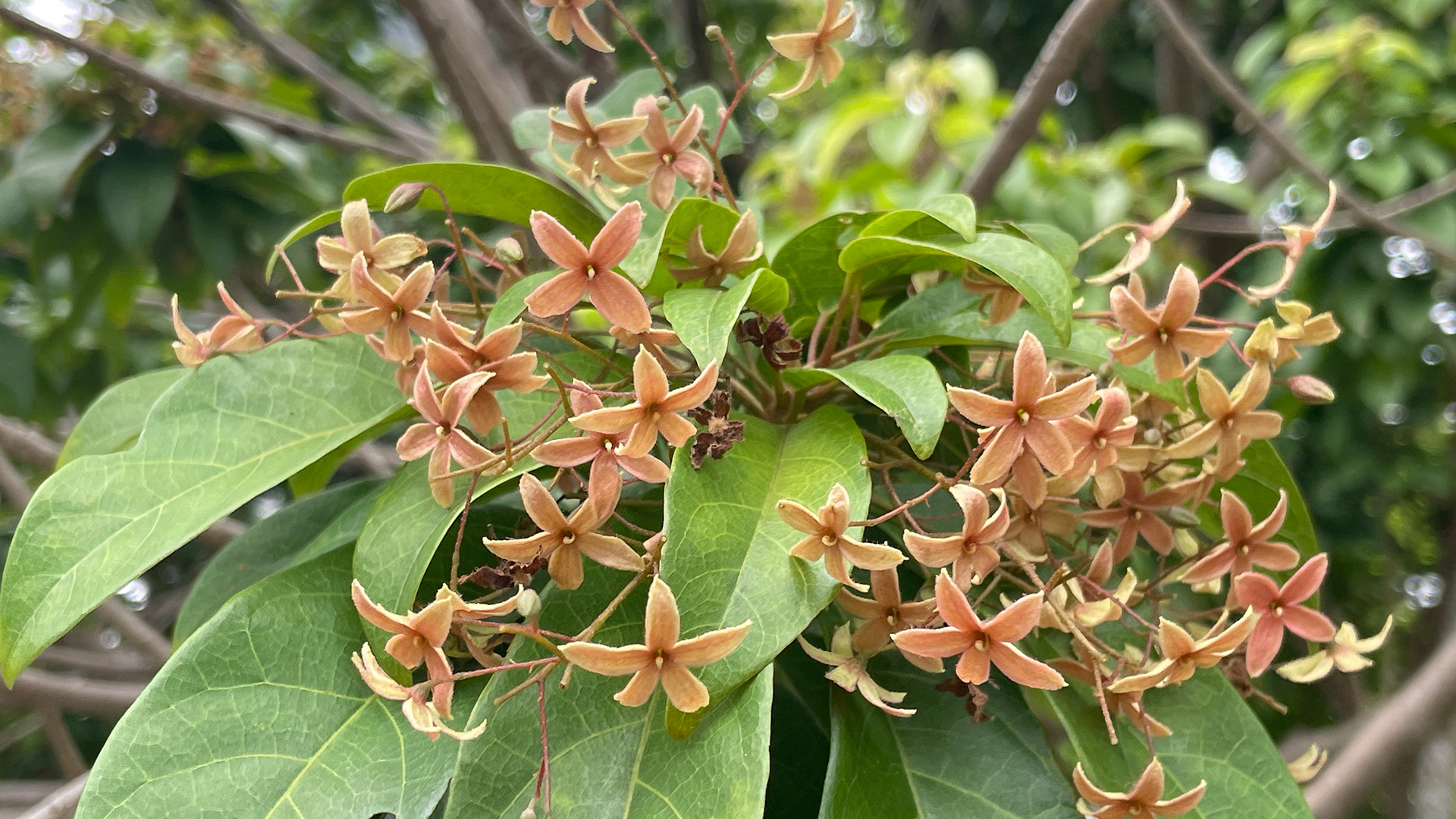
/1000x1000-thumb-scabiosa.jpg)
